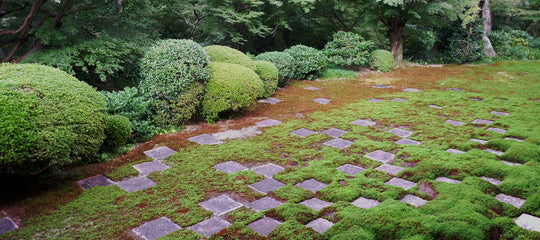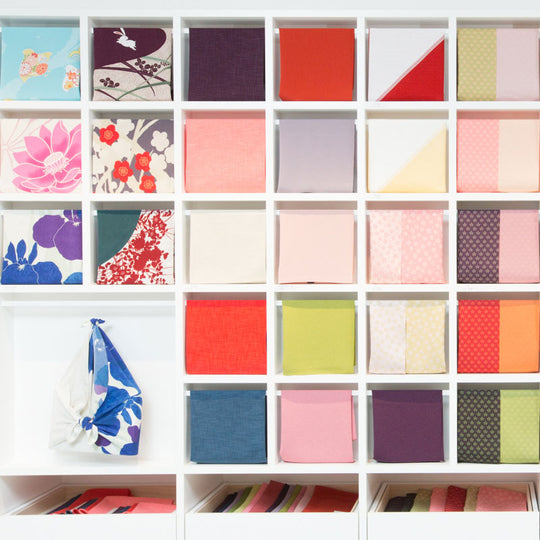
When you walk in Japan, you will happen to bump into several symbolic patterns.
I found some patterns at a temple called "Tofuku-ji(東福寺)" which is located comparatively close to Kyoto station.
This is "The northern garden".
A combination of square-cutted stones and moss creates "Ichimatsu pattern (checkered pattern)".

In the middle of Edo-era, Ichimatsu pattern got famous because of one of the most popular Kabuki actors
"Sanokawa Ichimatsu" who was dressed in Hakama with the checkered pattern in white and deep blue color;
it began to be called Ichimatsu pattern by his name.
Tanjiro from Kimetsu no Yaiba (鬼滅の刃) wears a kimono with Ichimatsu pattern in green and black colors.
"Ichimatsu pattern (checkered pattern)" means the eternity and prosperity because the pattern lasts endlessly.
The pattern was used for the emblem of Tokyo Olympic 2020.
Ichimatsu pattern on Musubi Furoshiki

70 Hare tsutsumi | Checker Navy

At "The southern garden", you will find "the flower arabesque" on the curtains hanging down.
I thought it has a Christmas mood or it even reminded me of the flag of Italy when I saw it from a distance.
However, when you take a closer look, the flower arabesque patterns are aligned.

The pattern is beautifully printed on "150 Kimono-tsutsumi | Flower Arabesque"
A new color: mustard has been added as our new collection.
Arabesque symbolizes fertility in Japan. Those can be found in Kimono patterns or other everyday items.
In terms of the flower for the pattern, it is said that no one can identify what the flower it is.
150 Kimono-tsutsumi | Flower Arabesque Mustard
Other Furoshiki with arabesque:

70 Hare tsutsumi | Japanese arabesque Red

120 Shosoin Cotton Jacquard | Grape Arabesque Purple
It's more fun this way travelling with some knowledges of the traditional patterns.

